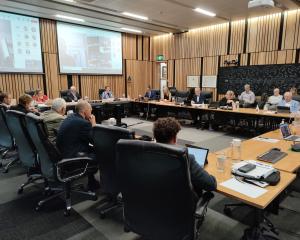By David Hill

Canterbury's observatories might be in lockdown, but there is plenty for budding scientists and the superstitious to discover.
While the Oxford Area School Observatory is in lockdown, volunteer Erik Vermaat has been keeping in touch his night class students via his “Corona Blog” and on Facebook.
He says a lockdown can be the ideal time to make new discoveries.
“Newton developed theories of calculus and gravity while at home. What are you doing?” Erik says.
As Erik points out, during the Great Plague of London in 1666, a 22-year-old Cambridge University student named Isaac Newton came up with new theories for calculus, optics and the law of gravitation, while in self-isolation after returning home to the family farm.
The superstitious will realise comets have a knack of making an appearance in the night sky in a crisis and Covid-19 doesn't disappoint, as Oxford Observatory volunteer James Moffat points out.
“Atlas C/2019 Y4 could almost be mistaken for the latest doomsday comet arriving around the same time Covid-19 made its first appearance in China.”
Comets have historically been “harbingers of death”, with Halley's Comet making one of its flybys in 1665, on the eve of the Great Plague which claimed 100,000 lives in London.
“This comet (Atlas) is fast living up to that reputation appearing in brightness as rapidly as the Covid-19 virus itself spreads.”
The Greek demi-god Atlas was perceived as carrying the weight of the world on his shoulders, “but in fact it was the celestial sphere not the terrestrial globe,” James says.
“That is a weight human-kind now bears upon his own shoulders in containing Covid-19.”
Unfortunately for New Zealand stargazers, the comet Atlas is more visible in the northern hemisphere night sky, but you can find about it by going to https://www.space.com/comet-atlas-may-be-brightenting.html.
On Erik's “Corona Blog” you can discover just how fast the speed of light is, all the observable parts of the electro-magnetic spectrum (which Ernest Rutherford helped to discover) and exoplanets. Find the link on the Oxford Observatory page on Facebook.














